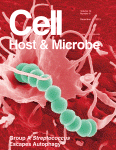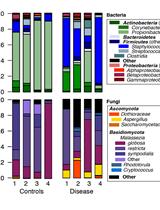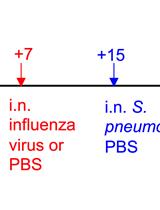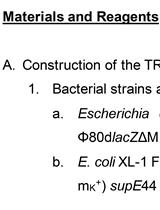- EN - English
- CN - 中文
Infant Rabbit Colonization Competition Assays
幼兔肠道中不同菌株的定植竞争分析
发布: 2014年06月05日第4卷第11期 DOI: 10.21769/BioProtoc.1147 浏览次数: 10848
评审: Anonymous reviewer(s)
Abstract
Enteric pathogenic bacteria such as Vibrio cholerae and enteropathogenic Escherichia coli (E. coli) cause life-threatening diarrheal diseases that have afflicted humans for centuries. Understanding the effectors required for intestinal colonization is very important to research on bacteria pathogenesis, and is also important to testing new therapeutics and development of the novel vaccines. Here, we describe the Infant Rabbit Colonization Competition Assay, a variant method of the powerful, nonsurgical animal model reported by Ritchie et al. (2010). In our modified assay, wild type and mutant strains are mixed together and inoculated into 2-day-old New Zealand white rabbits. The competitive index for each mutant measures the colonization capacity of the mutant relative to its wild type parental strain in the gastrointestinal tract. Compared to the traditional Sucking Mice model, the clinical and histologic signs of Vibrio cholerae (V. cholerae)-induced disease of infant rabbits more closely resemble human cholera. The larger input bacteria amount of this model also facilitates high-throughput screens, such as Tn-Seq technology (Fu et al., 2013).
Materials and Reagents
- New Zealand white infant rabbit (2-5 days old) (Millbrook farm)
- Lactating doe (Millbrook farm)
- Vibrio cholerae
Note: Alternatively, any enteric pathogenic bacteria that can successfully colonize the infant rabbit gut system can be used in this protocol.
- Zantac (GlaxoSmithKline, NDC: 0173-0363-01 )
- 40 mEq/20 ml potassium chloride (KCl) (Hospira, NDC: 0409-6653-05 )
- Isoflurane (USP) (Piramal Enterprises, NDC: 66794-013-25 )
- Phosphate buffered saline (PBS) (Lonza, catalog number: 51225 )
- X-gal and/or antibiotics (depend on the selective marker of the experimental strain)
- 70% ethanol
- 2.5% sodium bicarbonate buffer (pH 8.0) (see Recipes)
- Luria-Bertani broth (LB) medium and LB agar solid medium (see Recipes)
Equipment
- BL2 animal facility
- Fume hood
- 37 °C incubator or warm room
- 1 ml sterile syringe (BD, catalog number: 305553 )
- 3 ml sterile syringe (BD, catalog number: DG508504 )
- 26 G 5/8 needle (BD, catalog number: 305115 )
- Surgical scissors and tweezers (Fine Science Tools)
- Centrifuge (Eppendorf, model: 5424 )
- 1.5 ml sterile microcentrifuge tube
- 96 wells tissue culture plate (BD, catalog number: 353072 )
- Size 5 French catheter
- Silk ligature
- Shaker
- Spectrophotometer
- Mini-bead beater-16 (Bio Spec Products, catalog number: 607 )
Procedure
文章信息
版权信息
© 2014 The Authors; exclusive licensee Bio-protocol LLC.
如何引用
Fu, Y. and Mekalanos, J. J. (2014). Infant Rabbit Colonization Competition Assays. Bio-protocol 4(11): e1147. DOI: 10.21769/BioProtoc.1147.
分类
微生物学 > 微生物-宿主相互作用 > 体内实验模型 > 哺乳动物
免疫学 > 宿主防御 > 综合
免疫学 > 动物模型 > 兔子
您对这篇实验方法有问题吗?
在此处发布您的问题,我们将邀请本文作者来回答。同时,我们会将您的问题发布到Bio-protocol Exchange,以便寻求社区成员的帮助。
Share
Bluesky
X
Copy link














